
FAUNA Paraguay Technical Publication Number 4
September 2006
INTRODUCTION
Parque Nacional Teniente Agripino Enciso (hereafter referred to as Enciso) is one of a collection of six reserves that make up the Reserva de la Biosfera del Chaco in extreme northern Paraguay. It was established in the 1990s with the aim to conserve sites of historical interest from the Chaco War and a population of the threatened Chaco Peccary or Tagua Catagonus wagneri a species known only from fossil remains that was first seen alive in 1976. Located at approximately km700 on the Ruta Trans-Chaco it is arguably the most accessible of the Chaco Biosphere Reserves. The habitat here consists mainly of dense, thorny Chaco forest with a low canopy and open undergrowth. In winter (June to September approximately) it is extremely dry, with considerable flooding taking place during the spring and early summer (September to December approximately) - a result of standing water from heavy seasonal rains (Mario Torales pers. comm.).
AIMS
Despite excellent visitor facilities, Enciso is one of the most isolated and least visited of Paraguay´s national parks. We aimed to perform an avifaunal inventory of the park which, in addition to records already in the Guyra Paraguay database, would help to produce a complete species list for the site. In the process a bilingual field guide (English/Spanish) to the birds of the park would be produced, to stimulate interest in birds and conservation amongst visitors, and highlight the uniqueness of this fascinating location.
STUDY SITE
Enciso is 40,000ha reserve consisting almost entirely of relatively uniform, xerophytic, spiny Chaco forest. A single walking trail, the “Sendero Trenchera” runs for approximately 2km in a loop from the administration block, but the rest of the park is almost impenetrable. Dirt roads run around the park boundary. Dormitory ccommodation is available for c20 people and camping is possible, though permission to visit must be obtained from SEAM (Secretaria del Ambiente) several days prior to arrival Tel 021 615803.
METHODS
Fieldwork was conducted during 27 days from 2 to 28 July 2006. We recorded the species seen and heard daily along the Sendero Trenchera and roads bordering the park, making estimates of approximate numbers of birds observed. We operated 9 mist nets of c90m total length at scattered sites throughout the park. Netting was performed for c9hrs each day, with nets closed during periods of rain and at night. Taped recordings were used sparingly to assist in the trapping of certain species. All birds were measured upon capture (see Appendix B for measurements), their age and condition assessed, selectively photographed and released. The weather was generally hot and sunny, with hot northern winds typical. We experienced no rain during fieldwork though 2 days were lost due to exceptionally high winds.
AN AVIFAUNAL INVENTORY OF PARQUE NACIONAL TENIENTE AGRIPINO ENCISO, DEPARTAMENTO BOQUERÓN, NORTHERN PARAGUAY
Paul Smith, Adam Betuel, Hemme Batjes, Silvia Centrón and Hugo del Castillo

RESULTS
A total of 113 species were recorded during the course of the field work with 108 within the boundaries of Enciso and a further 5 outside the boundary but within 4km of the reserve. Of these 8 were new for the park, with the hypothetical Lined Seedeater Sporophila lineola possibly representing a ninth new species. After the completion of field work and not including the hypothetical species the total list for Enciso now stands at 175 (Guyra Paraguay 2006).
Below we give brief details of the new records:
American Wood Stork Mycteria americana - Four seen flying over the reserve on 3 July by HB. This species is considered frequent in the Alto Chaco of Paraguay (Clay and del Castillo 2004) where it undertakes local movements based on the availability of water (Hancock, Kushlan & Kahl 1992).
Zone-tailed Hawk Buteo albonotatus - Single adult birds seen on several occasions by all observers, with the first record on 5 July. This species is considered scarce in the Alto Chaco of Paraguay (Clay and del Castillo 2004).
Collared Forest-falcon Micrastur semitorquatus - Single adult birds seen on 4 and 8 July, with calling birds heard on several other days. This species is considered scarce in the Alto Chaco of Paraguay (Clay and del Castillo 2004).
Cream-backed Woodpecker Campephilus leucopogon - Several pairs of birds of seen and heard drumming by all observers, on numerous occasions with the first record on 15 July. This species is considered uncommon in the Alto Chaco of Paraguay (Clay and del Castillo 2004).
Golden-green Woodpecker Piculus chrysochloros - A single male seen on 27 July on the Trans-Chaco Highway which forms the southern boundary of the reserve (HB). This species is considered uncommon in the Alto Chaco of Paraguay (Clay and del Castillo 2004).
Black-backed Water-tyrant Fluvicola albiventer - A single bird seen on 11 July in an area with no standing water (HB). This species is considered uncommon in the Alto Chaco of Paraguay (Clay and del Castillo 2004).
“Unnamed” Tyrannulet Serpophaga/Inezia sp. - Found to be common within the reserve with numerous individuals recorded daily by all observers. This is a cryptic species and the subject of an ongoing taxonomic review (Straneck 1993, Herzog 2001, Herzog and Mazar Barnett 2004 etc.) extremely similar in plumage to White-crested Tyrannulet Serpophaga subcristata. Though there are some slight plumage differences these may be subject to variation and in the field the two species are only reliably separated by voice (Mark Pearman in litt.). White-crested Tyrannulet was already on the site list and was found to be present in small numbers, despite the fact that the Atlas of the Birds of Paraguay (del Castillo 2006) does not map the species in the Alto Chaco at all. This latter error is likely due to an assumption by the Atlas authors that “Unnamed” replaces White-crested Tyrannulet in the Paraguayan Chaco, with an “arbitrary line” drawn between the ranges of the two species in an attempt to make sense of the confusing taxonomic history and limited reliable sight records (Rob Clay in litt.) We assume that the difficulties involved in the identification of “Unnamed” Tyrannulet are behind its previous omission from the Enciso list and conclude that the ranges of White-crested and “Unnamed” Tyrannulets in Paraguay overlap considerably more than was previously thought.
Grassland Sparrow Ammodramus humeralis - Several individuals seen in scrubby areas along the Ruta Trans-Chaco which forms the southern boundary of the reserve (HB, AB). This species is considered common in the Alto Chaco of Paraguay (Clay and del Castillo 2004).
Hypothetical Species
Lined Seedeater Sporophila lineola - Single female-type birds seen in scrubby and grassy areas on 3 and 6 July (PS, HB) with another individual seen at nearby Parque Nacional Médanos del Chaco on 10 July. These birds were nondescript plain olive-brownish in colour with a slight buffy tinge to the underparts. The bill was wholly pale pinkish. We were able to eliminate the possibility that these birds were Dull-coloured Grassquit Tiaris obscura on account of the uniformly pink, not bicoloured orange and black bill. The birds bore a close resemblance to the illustration of female Lined Seedeater in Narosky and Yzurieta (2003), an uncommon summer migrant in the Alto Chaco, leading us to suspect that they may represent overwintering female or first winter juvenile birds. On account of the bill colour they were definitely not referable to female Double-collared Seedeater Sporophila caerulescens, the only other seedeater previously listed for Enciso and a species with which all observers were familiar. However the complexities of female seedeater identification lead us to consider the species hypothetical pending further records.
CHACO ENDEMICS, MIGRANTS AND THREATENED SPECIES
83.3 per cent (15 of 18) of the Chaco endemic species found in Paraguay have been recorded at Enciso (Short 1975, Guyra Paraguay Database 2006). Of these we recorded 13 (86.7%) during our field work.
Thirty species (17.1% of the total list) are considered migrant to Enciso and can be split into four categories following del Castillo (2006). Nearctic migrants (NM) are summer visitors from North America and include 4 species on the Enciso list. Austral Northern Migrants (AN) are summer visitors from further north in South America and include 11 species on the Enciso list. Breeding Residents and Austral Southern Migrants (AS) are species with resident populations in Paraguay whose populations are augmented in winter by visitors from further south or west in South America and include 8 species on the Enciso list. Non-breeding winter visitors (AV) are species present in Paraguay during the winter but absent during the summer. Of these species neither the NM nor AN migrants would be expected to be present during our fieldwork, a total of 15 species (8.6% of the total list).
Only one globally-threatened species occurs in the entire Chaco, the Crowned Eagle Harpyhaliaetus coronatus (Birdlife International 2004), and though we did not record it within the park, one individual was photographed just 4km south-east of the park boundary. 8 species recorded here are of national conservation concern - 1 EN, 1 VU, 6 NT, representing 4.6% of the total species list for the site (Guyra Paraguay in press). We recorded 4 of these species, 50% of the total.
SPECIES COMPOSITION
Bird species diversity is extremely low at Enciso compared with similar sized areas in eastern Paraguay, a result of the harshness of the environment and the relative uniformity of the habitat in the Alto Chaco. Furthermore fieldwork took place during the winter months when the Alto Chaco is driest (substantially reducing the possibility of encountering waterbirds) and summer migrant species were absent. In general the Chaco endemic avifauna is well-represented and most species can be observed with relative ease over the course of a few days. Most of the passerine species we recorded were uncommon to abundant, only very few species eg Blue-and-Yellow Tanager, Ultramarine Grosbeak, Blue-black Grassquit were recorded in very small numbers and could be considered difficult to observe.
One of the most notable features of the avifauna were the abundant mixed species flocks, typically consisting of four core species, the Red-crested Finch, Saffron Finch, the endemic Many-coloured Chacofinch and the Black-crested Finch. The latter was one of the most numerous species at the park, though its Paraguayan range seems to be confined to the extreme western Alto Chaco, becoming rapidly uncommon within a few dozen kilometers south along the Trans Chaco Highway. Present in smaller numbers in such flocks were the Chaco endemic Black-capped Warbling-finch (on occasion forming larger monospecific flocks of 7 to 15 birds) and the Ringed Warbling-finch, the latter in general the least numerous and usually only represented by a single pair of birds. Golden-billed Saltator is less numerous than it is in the Central Chaco area. Tanagers were thin on the ground, the most numerous species being Lowland Hepatic-tanager, invariably encountered in pairs. Both Tropical Parula and Masked Gnatcatcher were abundant and conspicuous and freely associated with mixed flocks whenever they formed.
Furnarids were well represented. Brown Cacholote and family groups of Lark-like Brushrunner were amongst the most conspicuous and easily observed. Short-billed Canastero and Stripe-crowned Spinetail were fairly numerous and at least one individual of each species was found to accompany larger mixed groups of species. Little Thornbird did not appear to join such groups, usually being encountered in small monospecific flocks of 3 or 4 individuals low in thick, spiny undergrowth. The two large Chaco endemic woodcreepers, Great Rufous Woodcreeper and Scimitar-billed Woodcreeper, were both encountered frequently. There has been some discussion recently over whether these two species can truly be considered “Chaco endemics” on account of a distributional range that encompasses an area much larger than the Chaco biome (Hugo del Castillo pers. comm..). Rufous Horneros at Enciso were noticeably smaller and paler than birds in eastern Paraguay, with a bolder facial pattern (creating the possibility of confusion with Pale-legged Hornero Furnarius leucopus), whiter throat and ventral area and more rufous forehead and hindneck. These may represent the subspecies commersoni or perhaps an area of intergrade between it and the subspecies paraguayae which inhabits most of the Paraguayan Chaco (Rob Clay in. litt, Short 1975, Vaurie 1980). However comparison with a large series of specimens is desirable to correctly determine their subspecific identity.
Antbirds are poorly represented. Despite searches with voice recordings we failed to find the Black-bellied Antwren, a species recently added to the Paraguay list (Madroño Nieto et al 1994). Variable Antshrikes belonging to the white-bellied Chaco form paraguayensis were apparently common, as were Great Antshrike, though both species were recorded more frequently by voice than by sight. The Stripe-backed Antbird, a Chaco speciality in Paraguay though not a Chaco endemic, was found only in scrubby, bushy areas along the Ruta Trans Chaco which forms the southern frontier of the park.
Small noisy flocks of Suiriri Flycatcher were perhaps the most obvious tyrannids, these often being in loose association with scattered Serpophaga tyrannulets of two species, White-crested and “Unnamed” Tyrannulets (see comments in RESULTS section) and pairs or trios of Greater Wagtail-tyrant. These loose tyrannid flocks also frequently attached onto larger mixed species aggregations. The Chaco endemic Cinereous Tyrant was fairly common but generally encountered alone and away from mixed groups, with females being considerably more frequently recorded than males. A single Lesser Shrike-tyrant was found on successive days in an open pasture adjacent to the park on the opposite side of the Ruta Trans Chaco. This species is an AM migrant to the Paraguayan Alto Chaco and is known from only a handful or records, though it had been previously reported for the park (Clay and del Castillo 2004).
A flock of c25 Baywing was recorded regularly around the accommodation, though its absence for several days at a time was suggestive of a nomadic existence. Solitary Cacique were difficult to observe but recorded daily by voice, a whiney woyeeeer reminiscent of a North American Grey Catbird Dumetella carolinensis (Adam Betuel pers. comm.). The gorgeous Orange-backed Troupial was recorded frequently with a maximum of three individuals seen drinking together.
Raptors were encountered daily in small numbers, typically American Kestrel (with a pair seen daily around the accommodation block), Bay-winged Hawk (a maximum of one adult and one juvenile seen together), Zone-tailed Hawk (new for the park but encountered with relative regularity) and Rufous-thighed Hawk (a single bird apparently resident at the watering hole where it was seen to attack passerines coming to drink on several occasions). Spot-winged Falconet was recorded only once, it being found with more ease and regularity in more open habitat at the nearby Parque Nacional Médanos del Chaco c60km north.
A resident group of Chaco endemic Quebracho Crested-tinamou passing daily in front of the accommodation would represent a major attraction for visiting birders. This little known species is shy and difficult to observe elsewhere in its range but was found to be bold and vocal at Enciso. The discovery of a dead bird with eggs suggested that the species was breeding at the time of fieldwork (Smith, Pearman and Betuel in press). Another Chaco endemic, the Chaco Chachalaca was abundant throughout the park.
Picui Ground-dove and Monk Parakeet both occur at extremely high density, with flocks of several hundred birds of each species encountered daily. A count of 75 Monk Parakeets was made in a single tree and their large stick nests were conspicuous. Healthy numbers of Turquoise-fronted Amazon were also found.
A total of seven Chaco endemic Chaco Owls on a single night-drive along the eastern border of the park suggests that the species occurs at high density in the area. It was recorded nightly by voice in the area around the accommodation. Three other owl species were also recorded in smaller numbers - Great Horned-Owl, Ferruginous Pygmy-owl and Tropical Screech-owl. A maximum count of three Scissor-tailed Nightjar was obtained on a night walk along the Sendero Trenchera. Little Nightjar was recorded on the road forming the eastern border of the park but not along the Sendero Trenchera
THREATS
As part of the Reserva de la Biosfera del Chaco scheme Enciso would seem to be relatively secure at least for the time being. There is a good basic
infrastructure in place and a team of motivated park guards work with local communities to reinforce the importance of the park. The impenetrability of the park vegetation and low population density in the area mean that habitat destruction is not an imminent threat, while hunting pressure is low and apparently sustainable. The Trans Chaco-Highway is unpaved for 20km or so prior to the park and little travelled, though during the annual Trans-Chaco Rally it experiences a sudden increase in traffic which has a negative impact on mammal and birdlife in the area (Mario Torales pers.comm.).
However there exist some potential future threats that could impact on the park. Land prices in the Chaco are currently low and with demand for land in eastern Paraguay driving up prices there is a growing movement towards the purchase of estates in the Chaco. Chaco land makes for good cattle-ranching which would result in an increase in habitat destruction. The possibility of untapped gas and oil deposits beneath the Chaco is being investigated by prospectors, and its discovery could have severe knock-on effects for conservation in the region.
CONCLUDING REMARKS
With ecotourism still in its infancy in Paraguay travel for independent birders can be difficult. This has led to Paraguay becoming something of a “forgotten corner” of South America, despite having a species list that compares more than favourably with similar-sized areas of neighbouring countries. With international attention diverted elsewhere, the plight of the endangered habitat types in Paraguay has gone somewhat unnoticed by both the local population and the international birding community.
One aspect of sustainable development that has yet to be fully explored in Paraguay is the development of ecotourism. Parque Nacional Teniente Enciso has comfortable, modern installations and relatively easy access compared to other Chaco sites which would seem to make it well-suited to capitalize on any increase in eco-travel to Paraguay. The high proportion of Chaco endemic species and the relative ease with which they can be seen should appeal to birders, while the spectacular mammal life and pristine environment will be of interest to anybody with an interest in eco-travel.
Through the production of the Parque Nacional Teniente Enciso mini guide, and subsequent titles in the “Where to Watch Birds in Paraguay” series we hope to raise interest and awareness amongst locals, landowners, birders and biologists in the rich but imminently threatened “naturaleza” of Paraguay and to assist in some small way the conservation of important, but hitherto unprotected sites with eco-touristic potential.
REFERENCES
Birdlife International 2004 Threatened Birds of the World CD-Rom.
Clay RP, del Castillo H 2004 Lista Anotada de las Aves del Paraguay Guyra Paraguay, Asunción.
del Castillo H 2006 Atlas de las Aves del Paraguay Guyra Paraguay, Asunción.
Davies SJJF 2002 Ratites and Tinamous Oxford University Press, Oxford.
Guyra Paraguay 2006 Guyra Paraguay Biodiversity Database.
Hancock J, Kushlan J, Kahl MP 1992 Storks, Ibises and Spoonbills of the World Academic Press, London.
Herzog SK 2001 A Re-evaluation of Straneck´s (1993) Data on the Taxonomic Status of Serpophaga subcristata and S.munda (Passeriformes: Tyrannidae): Conspecifics or Semi-species? Bulletin BOC 121: p273-277.
Herzog SK, Mazar Barnett J 2004 On the Validity and Confused Identity of Serpophaga griseiceps Berlioz 1959 (Tyrannidae) Auk 121: p415-421.
Madroño Nieto A, Abelaira A, Jiménez de Miguel B 1994 Formicivora melanogaster una Especie Nueva para el Paraguay (Aves: Formicariidae) Nótulas Faunísticas 65: p1-4.
Narosky T, Yzurieta D 2003 Birds of Argentina and Uruguay: A Field Guide 15th Ed Vazquez Mazzini Editores, Buenos Aires.
Short LL 1975 A Zoogeographical Analysis of the South American Chaco Avifauna - Bulletin of the American Museum of Natural History 154.
Smith P, Pearman M, Betuel A in press An Unusual Record of Quebracho Crested-tinamou Eudromia formosa from the Dry Chaco of Paraguay with Comments on its Behaviour in Argentina
Straneck R 1993 Aportes para la Identificación de Serpophaga subcristata y Serpophaga munda y la Revalidación de Serpophaga griseiceps (Aves: Tyrannidae) Rev. Mus. Arg. Cs. Nat. Zool. 16: p51-63.
Vaurie C 1980 Taxonomy and Geographical Distribution of the Furnariidae Bulletin AMNH 166.
APPENDIX A: SPECIES LIST FOR PARQUE NACIONAL TENIENTE AGRIPINO ENCISO
Symbol Key: R = Recorded During Project; O = Recorded in the vicinity of Enciso (within 4km), but outside the park boundaries; V = Recorded By Voice During Project; T = Trapped; CH = Chaco Endemic; Species recorded during the project as new to the Enciso lists are highlighted in bold face.
Migrant Status NM = Nearctic Migrant; AN = Austral Northern Migrant; AS = Breeding Resident and Southern Migrant; AV = Non-Breeding Winter Visitor;
Conservation Status EN = Endangered; VU = Vulnerable; NT = Near Threatened - those in brackets refer to the national conservation status.
1. Rhea americana - Greater Rhea - O NT (NT)
2. Crypturellus parvirostris - Small-billed Tinamou - V
3. Crypturellus tataupa - Tataupa Tinamou - V
4. Nothoprocta cinerascens - Brushland Tinamou - R CH
5. Nothura maculosa - Spotted Tinamou
6. Eudromia formosa - Quebracho Crested-tinamou - R CH
7. Tigrisoma lineatum - Rufescent Tiger-heron
8. Syrigma sibilatrix - Whistling Heron - R
9. Ardea alba - Great Egret
10. Egretta thula - Snowy Egret
11. Butorides striata - Striated Heron
12. Mycteria americana - American Wood Stork - R
13. Theristicus caudatus - Buff-necked Ibis
14. Chauna torquata - Southern Screamer
15. Dendrocygna autumnalis - Black-bellied Whistling-duck
16. Callonetta leucophrys - Ringed Teal
17. Sarkidiornis melanotos - Comb Duck - (EN)
18. Cairina moschata - Muscovy Duck - (NT)
19. Coragyps atratus - Black Vulture - R
20. Cathartes aura - Turkey Vulture - R
21. Cathartes burrovianus - Lesser Yellow-headed Vulture
22. Sarcoramphus papa - King Vulture - O (NT)
23. Chondrohierax uncinatus - Hook-billed Kite
24. Gampsonyx swainsonii - Pearl Kite
25. Elanus leucurus - White-tailed Kite
26. Harpagus diodon - Rufous-thighed Kite - AN (NT)
27. Ictinia plumbea - Plumbeous Kite - AN
28. Accipiter erythronemius - Rufous-thighed Hawk - R
29. Accipiter bicolor - Bicolored Hawk
30. Geranospiza caerulescens - Crane Hawk - R
31. Buteogallus urubitinga - Great Black-hawk
32. Buteogallus meridionalis - Savanna Hawk - O
33. Parabuteo unicinctus - Bay-winged Hawk - R
34. Busarellus nigricollis - Black-collared Hawk
35. Geranoaetus melanoleucus - Black-chested Buzzard-eagle
36. Harpyhaliaetus coronatus - Crowned Eagle - O EN (VU)
37. Asturina nitida - Grey Hawk - (NT)
38. Buteo albonotatus - Zone-tailed Hawk - R
39. Buteo magnirostris - Roadside Hawk - R
40. Buteo swainsoni - Swainson’s Hawk - NM
41. Buteo albicaudatus - White-tailed Hawk
42. Caracara plancus - Southern Crested-caracara - R
43. Herpetotheres cachinnans - Laughing Falcon - R
44. Spiziapteryx circumcinctus - Spot-winged Falconet - R CH
45. Falco sparverius - American Kestrel - R
46. Falco femoralis - Aplomado Falcon - R
47. Micrastur semitorquatus - Collared Forest-falcon - R
48. Ortalis canicollis - Chaco Chachalaca - R CH
49. Aramus guarauna - Limpkin
50. Cariama cristata - Red-legged Seriema - V
51. Chunga burmeisteri - Black-legged Seriema - CH
52. Vanellus chilensis - Southern Lapwing - R
53. Jacana jacana - Wattled Jacana
54. Tringa solitaria - Solitary Sandpiper - NM
55. Calidris fuscicollis - White-rumped Sandpiper - NM
56. Patagioenas picazuro - Picazuro Pigeon - R AS
57. Patagioenas cayennensis - Pale-vented Pigeon
58. Zenaida auriculata - Eared Dove - R
59. Columbina talpacoti - Ruddy Ground-dove
60. Columbina picui - Picui Ground-dove - R
61. Leptotila verreauxi - White-tipped Dove - R
62. Aratinga acuticaudata - Blue-crowned Parakeet - R
63. Nandayus nenday - Black-hooded Parakeet
64. Myiopsitta monachus - Monk Parakeet - R
65. Amazona aestiva - Turquoise-fronted Amazon - R (NT)
66. Coccyzus americanus - Yellow-billed Cuckoo - NM
67. Piaya cayana - Squirrel Cuckoo
68. Tapera naevia - Striped Cuckoo
69. Crotophaga major - Greater Ani - AN
70. Crotophaga ani - Smooth-billed Ani - R
71. Guira guira - Guira Cuckoo - R
72. Megascops choliba - Tropical Screech-owl - R
73. Bubo virginianus - Great Horned-Owl - R
74. Strix chacoensis - Chaco Owl - R CH
75. Glaucidium brasilianum - Ferruginous Pygmy-owl - R
76. Athene cunicularia - Burrowing Owl
77. Asio clamator - Striped Owl
78. Asio flammeus - Short-eared Owl
79. Podager nacunda - Nacunda Nighthawk - R AS
80. Caprimulgus longirostris - Band-winged Nightjar - AV
81. Caprimulgus parvulus - Little Nightjar - R
82. Hydropsalis torquata - Scissor-tailed Nightjar - R
83. Chaetura meridionalis - Sick's Swift - AN
84. Chlorostilbon aureoventris - Glittering-bellied Emerald - R
85. Hylocharis chrysura - Gilded Sapphire - R
86. Heliomaster furcifer - Blue-tufted Starthroat - R
87. Nystalus maculatus - Spot-backed Puffbird - R
88. Picumnus cirratus - White-barred Piculet - R
89. Melanerpes candidus - White Woodpecker - R
90. Melanerpes cactorum - White-fronted Woodpecker - R
91. Picoides mixtus - Checkered Woodpecker - R
92. Colaptes melanochloros - Green-barred Woodpecker - R
93. Piculus chrysochloros - Golden-green Woodpecker - R
94. Campephilus melanopogon - Cream-backed Woodpecker - R CH
95. Drymornis bridgesii - Scimitar-billed Woodcreeper - R CH
96. Xiphocolaptes major - Great Rufous Woodcreeper - R CH
97. Lepidocolaptes angustirostris - Narrow-billed Woodcreeper - R
98. Campylorhamphus trochilirostris - Red-billed Scythebill - R
99. Upucerthia certhioides - Chaco Earthcreeper - CH
100. Furnarius rufus - Rufous Hornero - R
101. Furnarius cristatus - Crested Hornero - R CH
102. Phleocryptes melanops - Wren-like Rushbird - AV
103. Schoeniophylax phryganophilus - Chotoy Spinetail - R
104. Synallaxis frontalis - Sooty-fronted Spinetail
105. Synallaxis albescens - Pale-breasted Spinetail - R
106. Cranioleuca pyrrhophia - Stripe-crowned Spinetail - R
107. Asthenes baeri - Short-billed Canastero - R
108. Phacellodomus sibilatrix - Little Thornbird - R
109. Coryphistera alaudina - Lark-like Brushrunne - R
110. Pseudoseisura lophotes - Brown Cacholote - R
111. Taraba major - Great Antshrike - R
112. Thamnophilus doliatus - Barred Antshrike - O
113. Thamnophilus caerulescens - Variable Antshrike - R
114. Myrmorchilus strigilatus - Stripe-backed Antbird - R
115. Formicivora melanogaster - Black-bellied Antwren
116. Rhinocrypta lanceolata - Crested Gallito - R CH
117. Sublegatus modestus - Southern Scrub-flycatcher - AN
118. Suiriri suiriri - Suiriri Flycatcher - R
119. Serpophaga /Inezia sp - “Unnamed” Tyrannulet - R AV
120. Serpophaga subcristata - White-crested Tyrannulet - R AS
121. Stigmatura budytoides - Greater Wagtail-tyrant - R
122. Hemitriccus margaritaceiventer - Pearly-vented Tody-tyrant - R
123. Pyrocephalus rubinus - Vermilion Flycatcher - AS
124. Xolmis irupero - White Monjita - R
125. Agriornis murinus - Lesser Shrike-tyrant - R AV
126. Knipolegus striaticeps - Cinereous Tyrant - R CH AS
127. Knipolegus aterrimus - White-winged Black-tyrant - AV (DD)
128. Fluvicola albiventer - Black-backed Water-tyrant - R
129. Machetornis rixosa - Cattle Tyrant - R
130. Casiornis rufus - Rufous Casiornis - R
131. Myiarchus tyrannulus - Brown-crested Flycatcher
132. Pitangus sulphuratus - Great Kiskadee - R
133. Myiodynastes maculatus - Streaked Flycatcher - AN
134. Griseotyrannus aurantioatrocristatus - Crowned Slaty-flycatcher - AN
135. Tyrannus melancholicus - Tropical Kingbird - AN
136. Tyrannus savana - Fork-tailed Flycatcher - AN
137. Pachyramphus viridis - Green-backed Becard
138. Phytotoma rutila - White-tipped Plantcutter - R AV
139. Cyanocorax chrysops - Plush-crested Jay - R
140. Troglodytes aedon - House Wren - R
141. Polioptila dumicola - Masked Gnatcatcher - R
142. Turdus rufiventris - Rufous-bellied Thrush
143. Turdus leucomelas - Pale-breasted Thrush
144. Turdus amaurochalinus - Creamy-bellied Thrush - R
145. Mimus saturninus - Chalk-browed Mockingbird - R
146. Mimus triurus - White-banded Mockingbird - R AV
147. Vireo olivaceus - Red-eyed Vireo - AN
148. Cyclarhis gujanensis - Rufous-browed Peppershrike - R
149. Parula pitiayumi - Tropical Parula - R
150. Thraupis bonariensis - Blue-and-yellow Tanager - R AS
151. Thraupis sayaca - Sayaca Tanager - R
152. Piranga flava - Lowland Hepatic-tanager - R AS
153. Tachyphonus rufus - White-lined Tanager
154. Saltator coerulescens - Grayish Saltator
155. Saltator aurantiirostris - Golden-billed Saltator - R
156. Pheucticus aureoventris - Black-backed Grosbeak
157. Cyanocompsa brissonii - Ultramarine Grosbeak - R
158. Paroaria coronata - Red-crested Cardinal - R
159. Coryphospingus cucullatus - Red Pileated-Finch - R
160. Saltatricula multicolor - Many-coloured Chaco-finch - R CH
161. Sporophila caerulescens - Double-collared Seedeater
162. Sporophila lineola - ???Lined Seedeater ??? - R? AN
163. Volatinia jacarina - Blue-black Grassquit - R
164. Sicalis flaveola - Saffron Finch - R
165. Poospiza torquata - Ringed Warbling-finch - R
166. Poospiza melanoleuca - Black-capped Warbling-finch - R CH
167. Lophospingus pusillus - Black-crested Finch - R AS
168. Zonotrichia capensis - Rufous-collared Sparrow - R
169. Ammodramus humeralis - Grassland Sparrow - R
170. Molothrus bonariensis - Shiny Cowbird
171. Molothrus rufoaxillaris - Screaming Cowbird - R
172. Cacicus solitarius - Solitary Cacique - R
173. Agelaioides badius - Greyish Baywing - R
174. Icterus cayanensis - Epaulet Oriole - R
175. Icterus croconotus - Orange-backed Troupial - R
176. Sturnella superciliaris - White-browed Blackbird
APPENDIX B - MEASUREMENTS
This appendix is available as a separate document on email request from FAUNA Paraguay at faunaparaguay@yahoo.com.ar
ACKNOWLEDGEMENTS:
Thanks to Guyra Paraguay and especially their director Alberto Yanosky for helping to facilitate fieldwork at Enciso. Their continued support of the Paraguay Mini Field-guides volunteer scheme is much appreciated. Permission to work at the park was kindly granted by SEAM and co-ordinated by Enrique Bragayrac. Mario Torales, head park guard at Parque Nacional Teniente Enciso and Parque Nacional Médanos del Chaco provided support and assistance during fieldwork. Thanks also to the other park guards at Enciso, especially Odulio Mareco who accompanied us in the field. Frank Fragano provided logistical support. Rob Clay and Mark Pearman´s expertise was vital in helping us to sort out some difficult taxonomic issues.
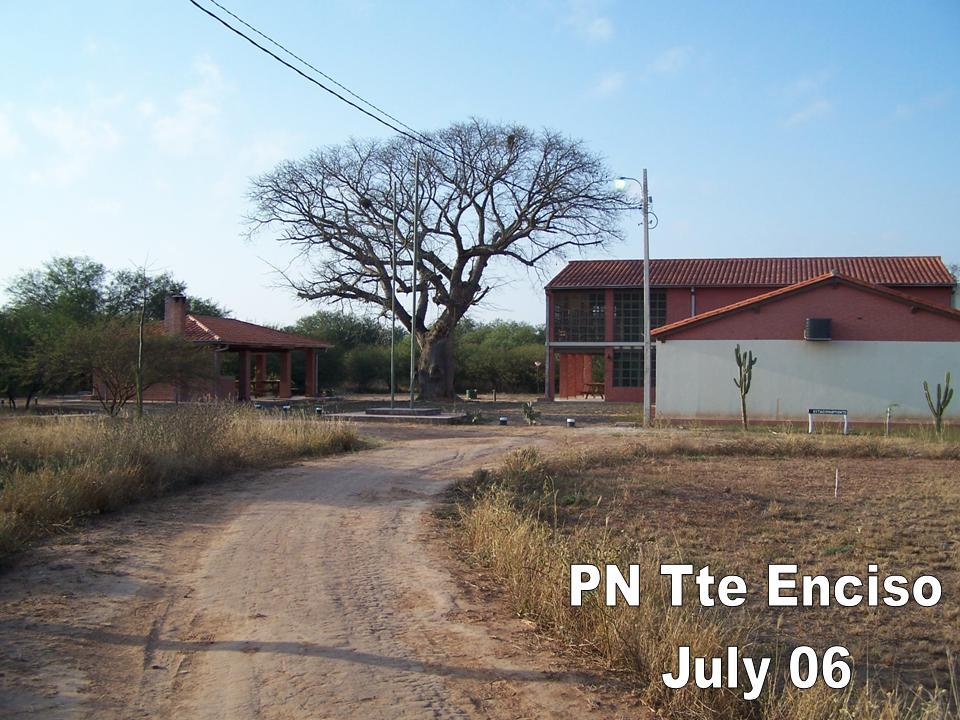
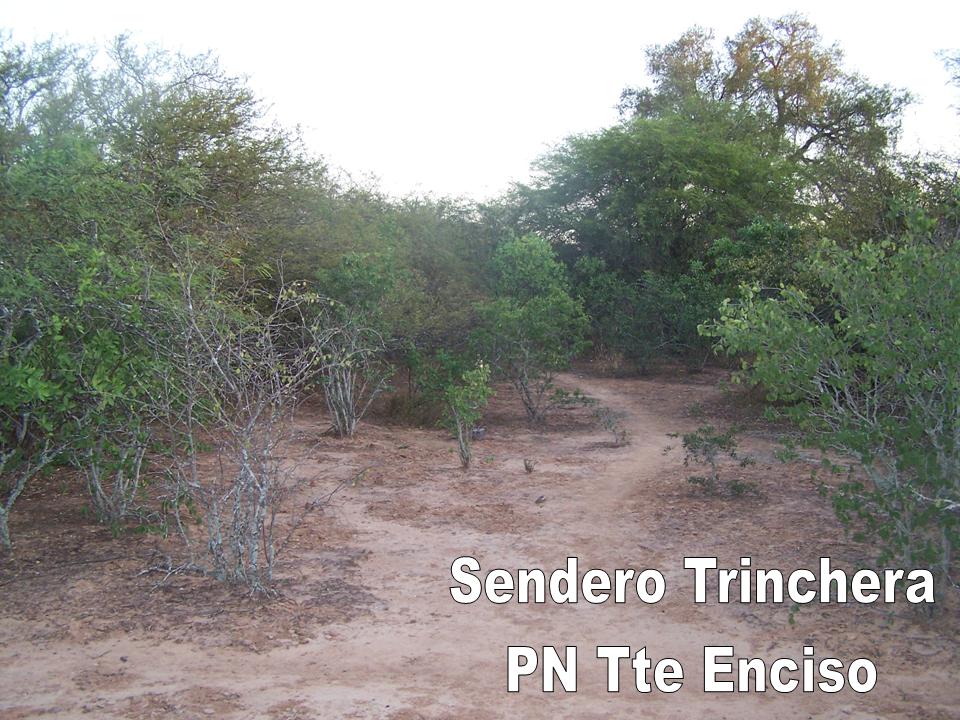
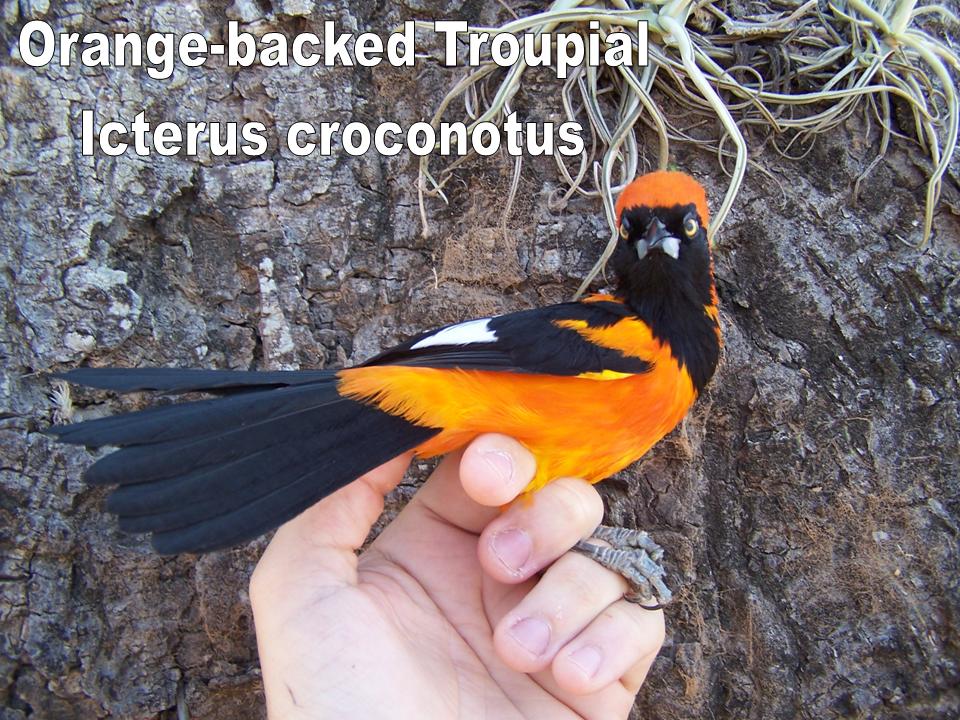
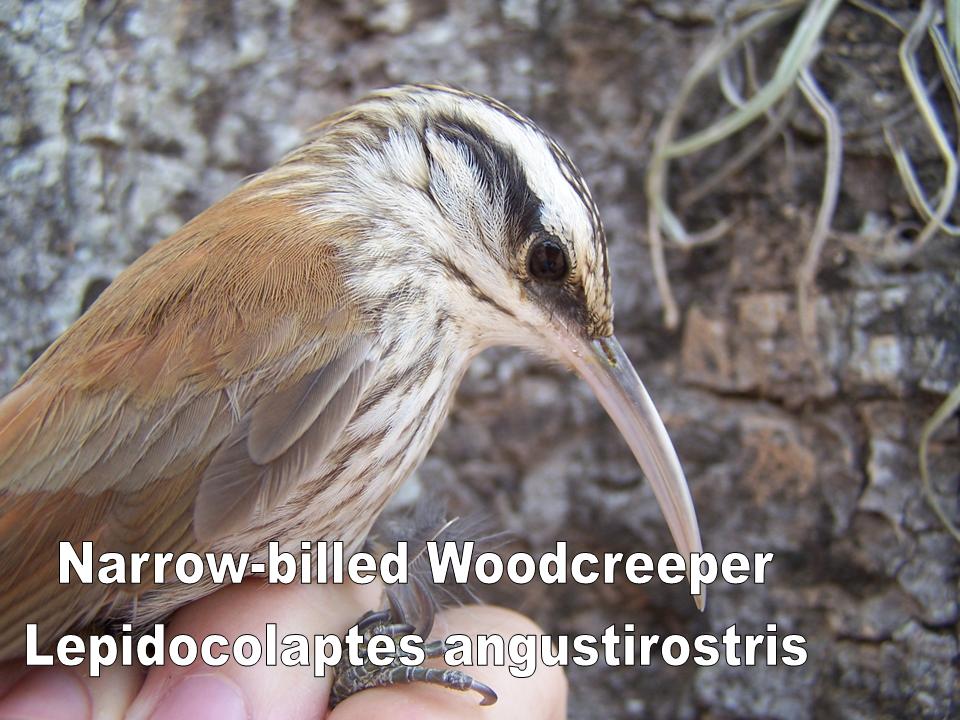
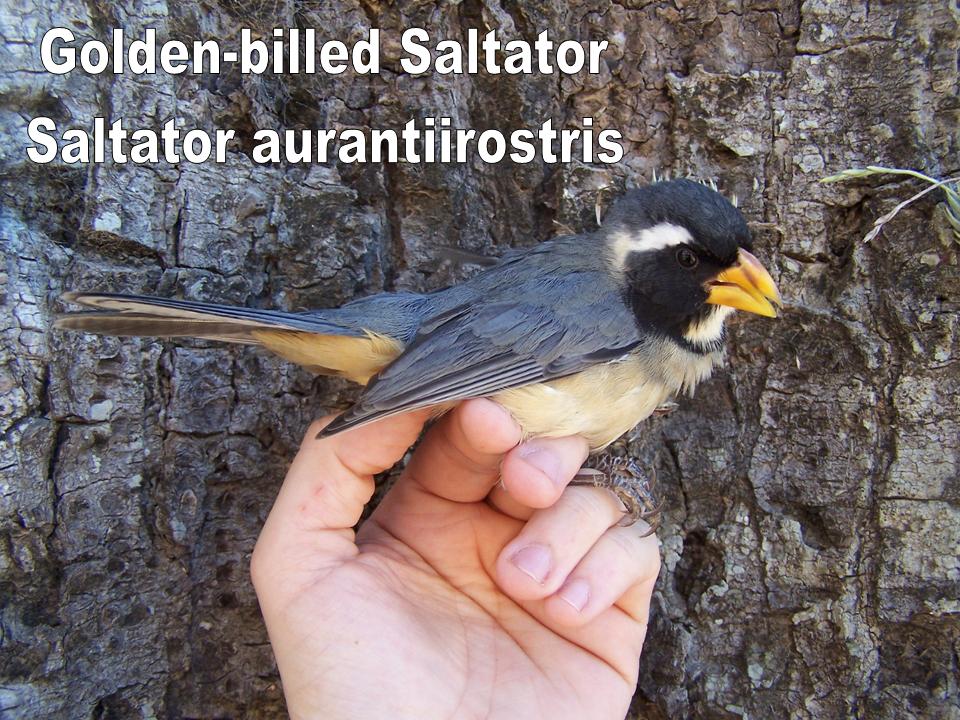
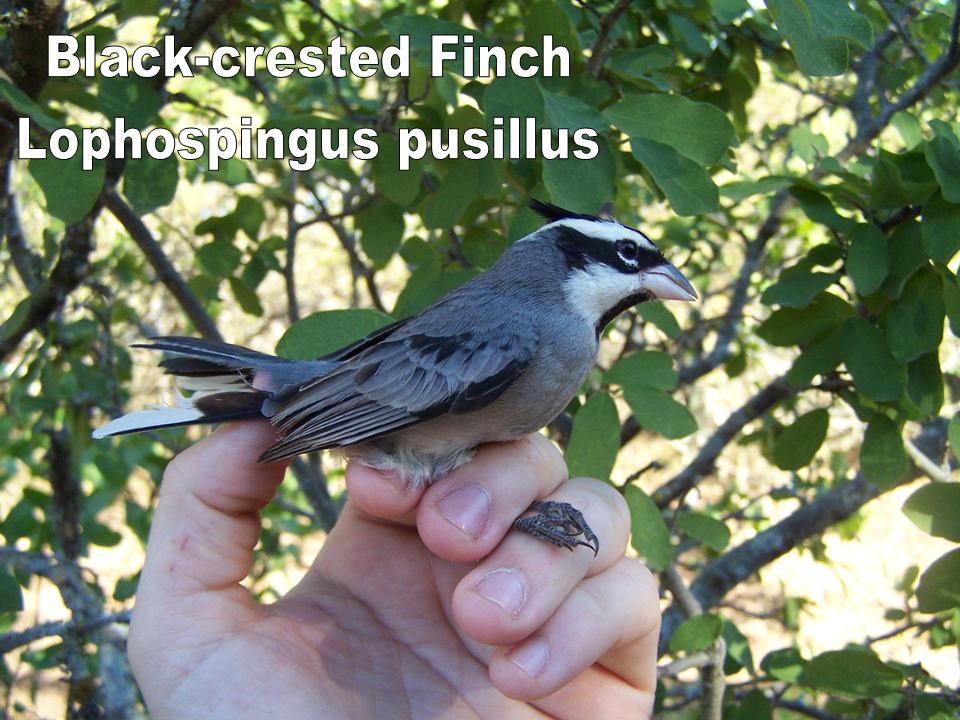
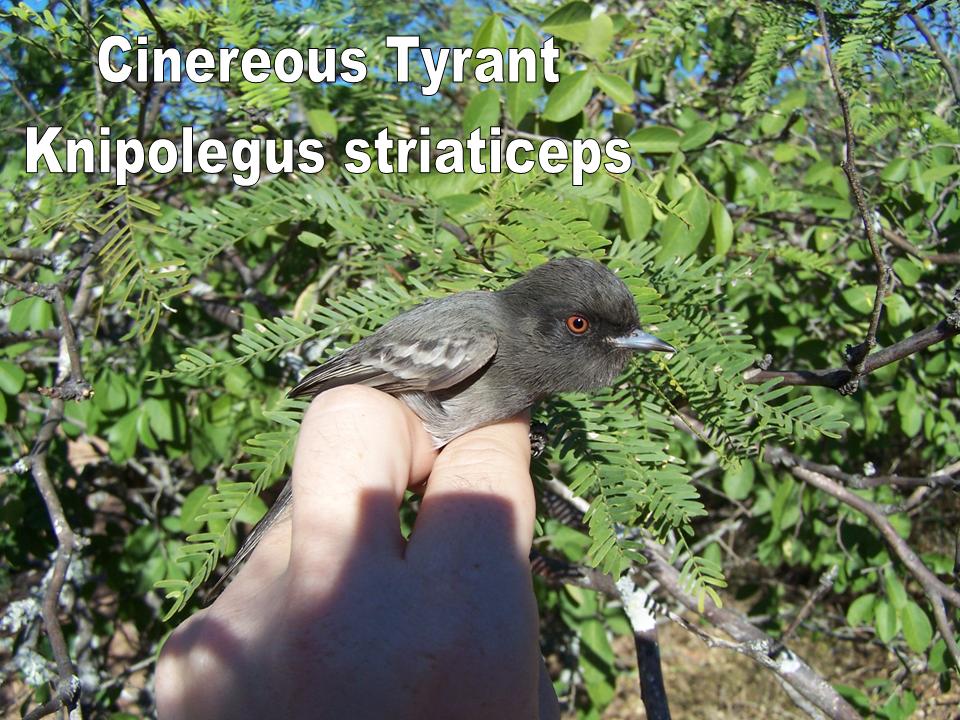
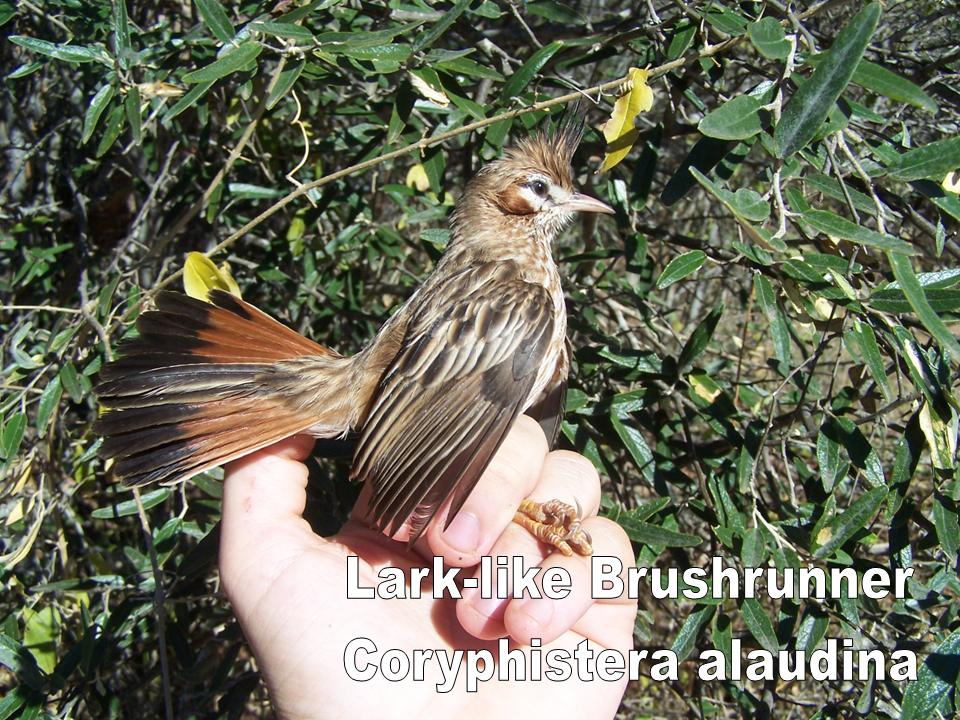
Designed by Paul Smith 2006. This website is copyrighted by law.
Material contained herewith may not be used without the prior written permission of FAUNA Paraguay.
Photographs on this web-site were taken by Paul Smith, Hemme Batjes, Regis Nossent,
Alberto Esquivel, Arne Lesterhuis, Rebecca Zarza and Hugo del Castillo and are used with their permission.









